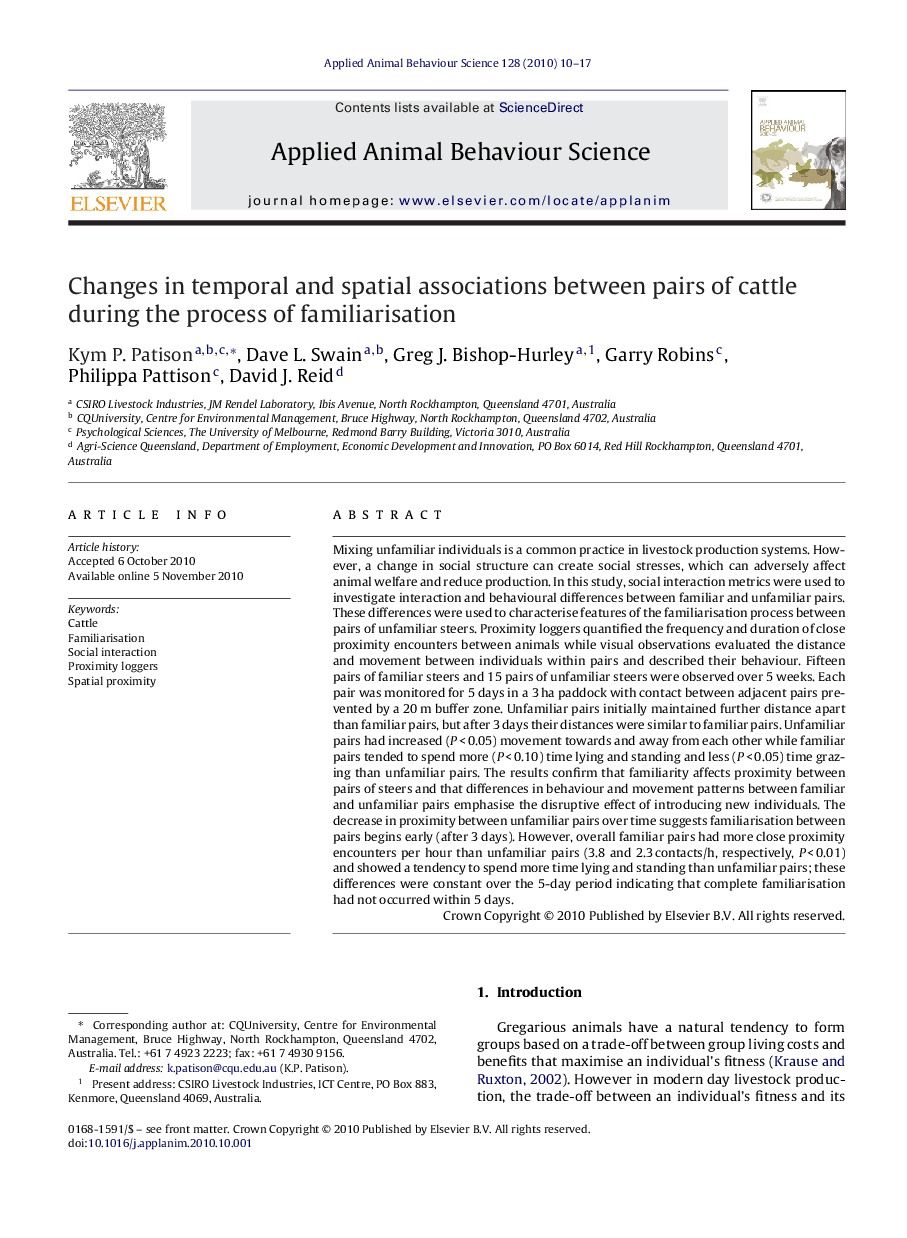| کد مقاله | کد نشریه | سال انتشار | مقاله انگلیسی | نسخه تمام متن |
|---|---|---|---|---|
| 4523241 | 1625393 | 2010 | 8 صفحه PDF | دانلود رایگان |

Mixing unfamiliar individuals is a common practice in livestock production systems. However, a change in social structure can create social stresses, which can adversely affect animal welfare and reduce production. In this study, social interaction metrics were used to investigate interaction and behavioural differences between familiar and unfamiliar pairs. These differences were used to characterise features of the familiarisation process between pairs of unfamiliar steers. Proximity loggers quantified the frequency and duration of close proximity encounters between animals while visual observations evaluated the distance and movement between individuals within pairs and described their behaviour. Fifteen pairs of familiar steers and 15 pairs of unfamiliar steers were observed over 5 weeks. Each pair was monitored for 5 days in a 3 ha paddock with contact between adjacent pairs prevented by a 20 m buffer zone. Unfamiliar pairs initially maintained further distance apart than familiar pairs, but after 3 days their distances were similar to familiar pairs. Unfamiliar pairs had increased (P < 0.05) movement towards and away from each other while familiar pairs tended to spend more (P < 0.10) time lying and standing and less (P < 0.05) time grazing than unfamiliar pairs. The results confirm that familiarity affects proximity between pairs of steers and that differences in behaviour and movement patterns between familiar and unfamiliar pairs emphasise the disruptive effect of introducing new individuals. The decrease in proximity between unfamiliar pairs over time suggests familiarisation between pairs begins early (after 3 days). However, overall familiar pairs had more close proximity encounters per hour than unfamiliar pairs (3.8 and 2.3 contacts/h, respectively, P < 0.01) and showed a tendency to spend more time lying and standing than unfamiliar pairs; these differences were constant over the 5-day period indicating that complete familiarisation had not occurred within 5 days.
Journal: Applied Animal Behaviour Science - Volume 128, Issues 1–4, December 2010, Pages 10–17